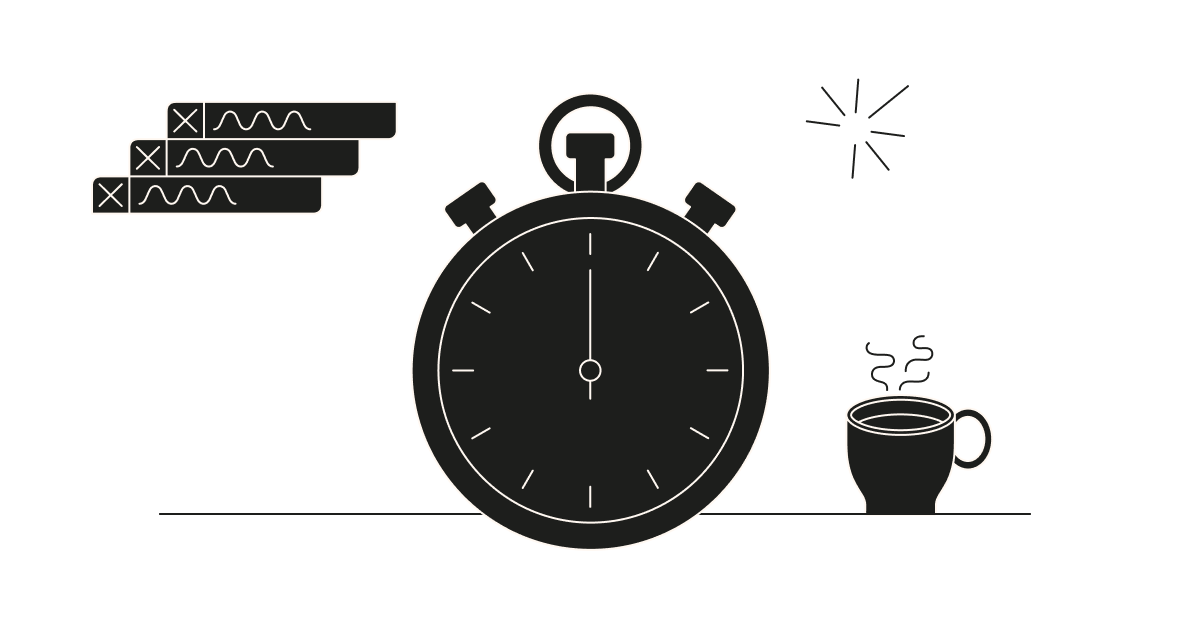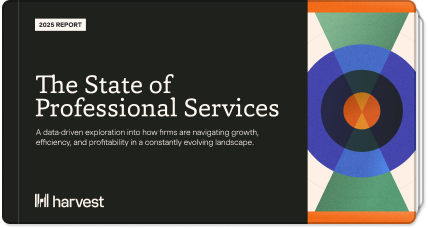
Imagine you're a graphic designer working on a project with a looming deadline. You're determined to create your usual brilliant work, armed with your creative ideas and a cup of strong coffee.
As you dive into your work, time seems to fly by faster than you realize. Before you know it, the deadline is just around the corner, and you're left scrambling to finish everything on time. Sounds familiar, doesn't it?
Time productivity can be a real challenge for graphic designers, and it's not because we lack talent or passion. Research has shown that we often underestimate the time and obstacles involved in completing a task, even when it directly contradicts our past experiences – referred to as the planning fallacy.
This not only leads to added stress and compromised quality of work but can also strain client relationships as well as hinder overall work performance.
Fortunately, there's a tool that can help us overcome this challenge and transform our productivity as graphic designers: the time tracking tool.
In this article, we'll explore six ways time tracking for graphic designers can revolutionize creative potential and help break free from the cycle of missed deadlines. So, let's dive in and unlock the secrets to becoming more productive than ever before!
What is a Time Tracking App?
Think about a virtual assistant that tracks every second of your workday, helping you stay on top of your tasks. That's exactly what a time tracking app does.
Gone are the days of manual time entries, so say hello to automatic time tracking. This digital one-click timer records accurate project tracking with advanced features to maximize your productivity, all wrapped in a user-friendly interface.
Time tracking is one of the most popular tools today for productivity, often in the form of a desktop app that allows you to monitor and manage how you allocate your time into billable hours. In this way, you can calculate your pay based on your hourly rate.
Aside from this, time tracking for graphic designers helps keep track of time spent on specific projects, tasks, or even individual activities through detailed reports. You simply start the timer when you begin a task, track time, and stop it when you're done. The app then logs the time spent and organizes it for you to review later.
But why is it considered the future of work? Well, as the way we work continues to evolve, with remote and flexible work becoming more prevalent, a time tracker has become essential for both individuals and teams. They provide a level of insight and control over our time that was previously difficult to achieve.
Whether you're a freelancer juggling multiple clients or part of a team collaborating on complex projects, using reliable time management software is like having your own personal productivity assistant to keep your work organized and stay on top of your game.
Increased Awareness of Time Allocation
As graphic designers, it's easy to get lost in the creative process and lose track of time. A time tracking software serves as your trusty guide, bringing awareness to how you spend your valuable hours.
By tracking and analyzing your time entries with time tracking analytics, you gain insights into your work habits, identifying time-consuming tasks that may be draining your productivity. Time analytics also help in setting realistic goals and deadlines, ensuring that employees have a clear understanding of their priorities and time allocation.
With a data-driven approach, this allows you to make informed decisions, optimize your workflow, and recognize areas for improvement, ensuring you make the most of your creative potential.
Improved Time Management
Effective time management is the cornerstone of productivity. Time tracking becomes your ally in mastering this crucial skill. You can prioritize tasks based on the importance and deadline of your tasks when you accurately track your time.
Think of a time budget as a blueprint for your day or week. It involves setting aside specific time blocks for different tasks or projects based on their importance and urgency. With task management, you can create a clear roadmap of what needs to be accomplished and when.
Setting realistic deadlines becomes easier when you have a clear overview of how long similar tasks have taken in the past. Moreover, time tracking helps you avoid the pitfalls of multitasking, allowing you to focus on one task at a time and achieve a higher level of concentration and quality in your work.
Accurate Project Estimations
Graphic designers rely heavily on accurate project estimations to plan projects, allocate resources, and meet client expectations. This is where time tracking data comes into play, revolutionizing how estimations are made in the world of graphic design.
Time tracking data provides a treasure trove of insights that can significantly enhance project estimations. By analyzing historical data from similar projects, designers can gain valuable information about the time it takes to complete certain tasks or deliverables.
This historical perspective allows for a more realistic assessment of the time required for future projects with similar scope and complexity.
Moreover, time tracking data enables designers to factor in unforeseen challenges. Every project comes with its own unique set of obstacles, and past experiences can shed light on potential roadblocks that may arise. By reviewing time tracking records, designers can identify recurring challenges, bottlenecks, or areas that consistently require additional time.
Armed with this knowledge, you can make more accurate estimations, allowing for buffers and contingencies to address these potential challenges.
Accountability and Client Transparency
Clients are the bread and butter for many graphic designers. They're the ones who keep the creative juices flowing and the projects rolling in. As a designer, your aim is to not only meet but exceed their expectations because, let's face it, satisfied clients are the ones who stick around and bring in more business.
In fact, studies show that customers who have excellent experiences with brands are willing to spend a whopping 140% more. So, how can you ensure such exceptional experiences as you build your personal brand? Well, one effective strategy is through proper time tracking management.
By efficiently managing your time, you can deliver projects on time, provide timely updates, and showcase your professionalism. Time tracking promotes a sense of accountability within graphic design projects. It provides you with accurate invoices of the time you've dedicated to specific tasks, including billable hours.
This not only helps you accurately bill your clients but also enhances transparency in your client relationships. By generating accurate time reports with detailed breakdowns of your billable rates and the time spent on each task, you establish trust and foster client satisfaction.
Transparent time tracking instills confidence in your design team, showcasing your professionalism and dedication.
Identifying and Eliminating Time Wasters
We all have our share of time-wasting activities that hinder productivity. Time tracking shines a light on these sneaky culprits, allowing you to identify and eliminate excessive idle time from your work routine.
Here are some common time-wasting activities and ways to address them:
- Social media distractions: We've all fallen into the black hole of endless scrolling. Use time tracking to monitor your break times and set limits on how much time you allow yourself for downtime or personal browsing.
- Inefficient workflow processes: Are there repetitive tasks or manual processes that eat up your time? Time tracking can highlight these bottlenecks, prompting you to streamline your workflow and properly track billable time. Look for opportunities to automate or create templates to save time in the long run.
- Lack of focus and concentration: Distractions can derail your productivity. Use time tracking to identify periods when you're most focused and alert. Schedule important tasks during these peak productivity times and create a distraction-free work environment.
- Poor task prioritization: Sometimes, we spend too much time on less important tasks while neglecting critical ones. Review your time tracking data to understand where your time is going. Prioritize tasks based on importance and urgency, ensuring that you allocate sufficient time to critical projects.
- Procrastination and indecisiveness: Time tracking can reveal patterns of procrastination and indecisiveness. Use productivity techniques or set specific deadlines to overcome these tendencies and keep your productivity on track.
- Ineffective communication and collaboration: Time can be wasted when communicating with clients or team members is unclear or inefficient. Use time tracking to identify communication gaps and explore ways to streamline collaboration processes, such as using project management tools or holding regular check-ins.
By using time tracking to identify and address these time wasters, you can optimize your workflow, minimize distractions, and make every minute count.
Enhancing Work-Life Balance
In today's fast-paced and competitive environment, maintaining a healthy work-life balance is crucial for long-term success.
Time tracking goes beyond work productivity; it supports your overall well-being. In fact, a Deloitte survey reveals that 83% of participants say burnout from work also negatively impacts personal relationships.
Here's how time tracking can transform your work-life balance:
- Identifies overwork patterns: Are you consistently working late into the night or sacrificing personal time for work? By reviewing your time tracking data, you can identify overwork patterns and take proactive steps to address them.
- Sets boundaries: Time tracking empowers you to set a clear separation between work and personal life. This allows you to mentally disconnect from work outside of those hours, giving you the freedom to fully engage in personal activities without the constant pull of work-related tasks.
- Prevents burnout: Time tracking acts as a reminder to take breaks, recharge, and pace yourself, avoiding the trap of overexertion that can lead to burnout.
- Allows for flexibility and work arrangements: With accurate time tracking data, you can demonstrate your productivity and show that you can deliver quality work within flexible schedules. This can open up opportunities for negotiation with clients or employers, allowing you to create a work environment that aligns better with your desired work-life balance.
With proper time tracking management, you can identify patterns of overwork and burnout, helping you take timely breaks and prioritize self-care. Allocating dedicated time for personal activities and nurturing your mental health becomes easier when you have a clear understanding of your work hours.
Final Thoughts: Track Your Time to Maximize Productivity
Time tracking for graphic designers is a game-changer in boosting overall productivity while maintaining a healthy work-life balance.
Time tracking practices bring awareness to how you allocate your time, helping you eliminate time-wasting activities and improve time management. Accurate project estimations and meeting deadlines become easier while accountability and client transparency are enhanced.
Time tracking also supports your well-being by identifying overwork patterns and allocating time for personal activities and self-care.
If you're ready to unleash the true potential of your time, it's time to connect with Harvest. Don't let time slip away unnoticed. Connect with us and embark on a journey of productivity and fulfillment.
Your time deserves the best, and Harvest is here to make it happen!















